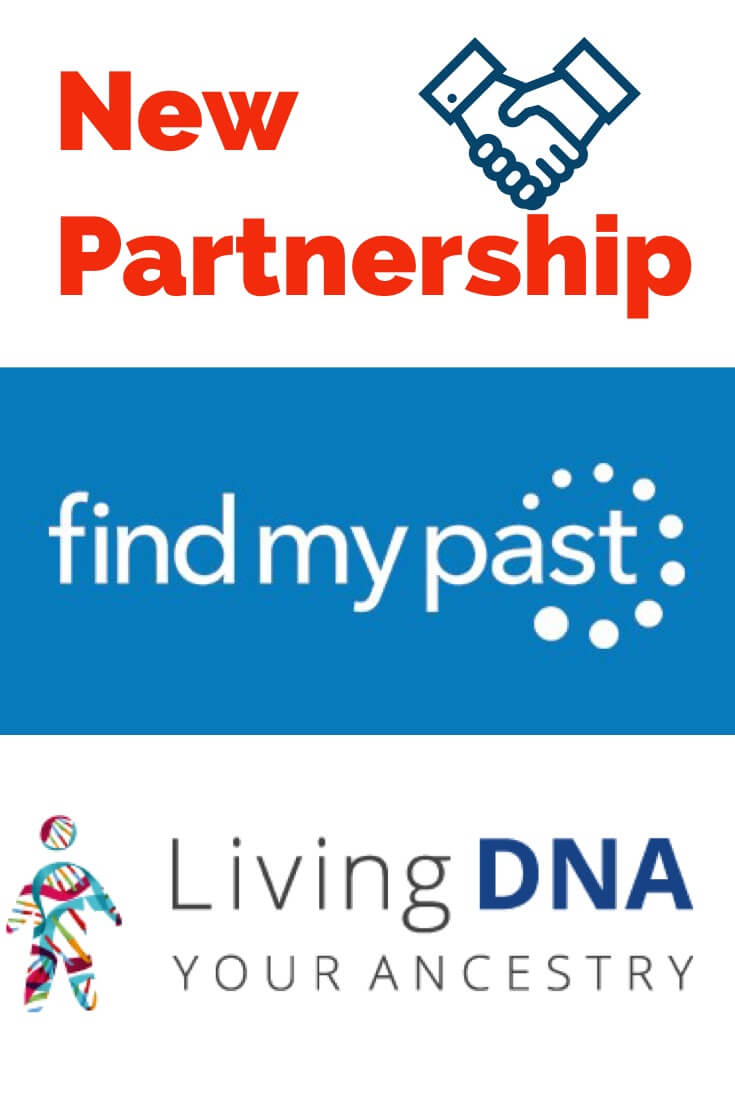by Lisa Cooke | Mar 30, 2019 | 01 What's New, Ancestry, DNA
Four members of a family–mom, dad, daughter, and son–tested with AncestryDNA. Their DNA ethnicity percentages vary. Why?
If you’ve taken a DNA test and received different ethnicity results than you expected and different from your family members, DNA expert Diahan Southard is here to explain why that happens.
There are limitations to the ethnicity results delivered by the various DNA testing companies.
For the most part, these admixture results are like that short film before the actual feature presentation. That feature presentation, in this case, is your genealogical match list. But, the short film is entertaining and certainly keeps your attention for a while. It can be especially interesting when you have several members of the same family tested so you can compare their ethnicity results.
Understanding Ethnicity Variance Within Immediate Families
Let’s consider the real AncestryDNA test results of a family we’ll call the “Reese family:”
The Reese family has something to their great advantage: their family history indicates that they are mostly from Western Europe. This is a big advantage in the climate of today’s ethnicity results as all of the testing companies have far more data in their reference populations pouring out of western Europe than from anywhere else. (See this article for more information and the latest data on DNA reference populations on each testing company.) That means that in general, they are going to be better at telling you about your heritage from Ireland or England than they are at discovering that you are from China or India.
Looking at the ethnicity results for the Reese family, we are tempted to start applying our knowledge of DNA inheritance to the numbers we see. We know that each child should get half of their DNA from their mom and half from their dad. So our initial reaction might be to look at the dad’s 40% Scandinavian and mom’s 39% Scandinavian and assume that the child would also be about 40% (20% from dad and 20% from mom).
You can see that the daughter did, in fact, mostly measure up to that expectation with 37% Scandinavian. But the son, with only 25%, seems to have fallen short. The temptation to consider the daughter as the far better example of familial inheritance is strong (especially for us daughters, who are so often exceeding expectations!), but of course inaccurate. It is actually very difficult to look at the parent’s numbers alone and estimate the percentages that a child will receive.
A Snippet about SNPs (snips)
Remember that these numbers are tied to actual small pieces of DNA we call SNPs (snips).
Of the near 800,000 SNPs evaluated by your testing company, less than half of them are considered valuable for determining your ethnicity.
The majority of the SNPs tested are working to estimate how closely you are related to your genealogical cousin.
A good SNP for ethnicity purposes has to be ubiquitous enough to show up in many individuals from a given population, but unique enough to only show up in that population, and not any others.
It is a difficult balance to strike. But even when good SNPs are used, it is still difficult for the computer at your testing company to make accurate determinations about your ancestry.
New to using DNA for genealogy? Watch:
(Click on player to unmute sound)
Take the Great Britain line in the Reese family data, for example. The dad has 21% and the mom has 7%, so it would follow that the largest amount any child could have would be 28%. We see the daughter (of course!) falling well within that range at 10%, but the son is seven points above at 35%. How does THAT happen?!
Let’s go back to some basic biology.
Remember that you have two copies of each chromosome: one from mom and one from dad. These chromosomes are made up of strings of letters denoting the DNA code. That means that at each SNP location, you report two letters (again, one from mom and one from dad).
As the testing company is lining these letters up for comparison, they have to decide which letters go together: which are from the same chromosome and which set came from one single source.
Understanding Phasing
The process of determining which set of values goes on which line is called phasing. Often the inconsistencies you see in your DNA test results, whether it be in the matching or in the ethnicity, are because of problems the company has with this very difficult process.
To illustrate how this works, let’s say we are trying to write two sentences: “The brown dog ate the bone.” and “A black cat scared a mouse.”
In this example, each word in each sentence represents a SNP. However, all the computer sees are two words, and it doesn’t know which word goes in which sentence. You can see in this example that it would be fairly easy to get it wrong. Mixing up a couple of words creates entirely new sentences with very different meanings, as shown in the examples below.
It’s important to understand that ethnicity results can, and will, vary among family members as well as different DNA testing companies for the reasons outlined above.
It can certainly be fun to compare what each family member received, but take it with a grain of salt. As you can see, a lot of genetic data is quickly lost over time.
In the Reese family example, we see that in one single generation this family has lost all traces of ancestry to several world regions. This really highlights the value of having the oldest generation of family members tested, to try to capture all that they have to offer in their DNA code.
Get more DNA help and plain-English explanations
If you’re feeling overwhelmed by DNA testing or struggling to make sense of the complex scientific data, our quick reference guides are exactly what you need!
Author and DNA expert Diahan Southard’s collection of DNA guides offer explanations in plain-English, helpful examples and graphics, and practical genealogical applications so you can make the most of your DNA results. Head over to the Genealogy Gems Store to browse our 10 DNA guides available in both print and digital download.
About the Author: Diahan Southard has worked with the Sorenson Molecular Genealogy Foundation, and has been in the genetic genealogy industry since it has been an industry. She holds a degree in Microbiology and her creative side helps her break the science up into delicious bite-sized pieces for you. She’s the author of a full series of DNA guides for genealogists.
Disclosure: This article contains affiliate links and Genealogy Gems will be compensated if you make a purchase after clicking on these links (at no additional cost to you). Thank you for supporting Genealogy Gems!
This article was originally published on February 28, 2016 and updated on March 30, 2019.
by Lacey Cooke | Nov 17, 2018 | 01 What's New, DNA, MyHeritage |
A brand new DNA test feature has just been launched at MyHeritage: the display of Shared Ancestral Places. This intriguing feature will arm you with more information to identify common ancestors and unlock mysteries in your family tree. Learn more about using this new tool and applying it to your DNA brick walls.
Shared Ancestral Places
DNA Matching is the core of any genetic genealogy testing service. But sometimes matches leave you with more questions than answers, or simply don’t have enough information for further investigation. MyHeritage DNA is tackling that very problem with their brand new feature: Shared Ancestral Places.
From their recent announcement, “When you review a DNA Match, it’s not always clear how the match is related to you and who your common ancestor may be. Up until now, you may have been able to figure out how your DNA Matches are related to you by looking at the family trees of your matches, the Shared Ancestral Surnames, or Smart Matches™ that exist between your trees. As of this week, if you and a DNA Match have a Shared Ancestral Place, you will be armed with more information to investigate the match further. You may be able to determine which common ancestor you and your match share from whom you both inherited the same DNA segments.”
What are Shared Ancestral Places?
As described by MyHeritage, “Shared Ancestral Places refer to towns, countries, or U.S. states that appear in your family tree as well as in the family trees of your DNA Matches, where birth or death events of your ancestors (and those of your DNA Matches’ ancestors) took place. These places are identified going back up to 10 generations and can play a vital role in family history research.”
When you receive a match and it is unclear what common ancestor you share, having a Shared Ancestral Place can be a wonderful clue that you are indeed related. Having shared origins, whether in a large city or small village, provides evidence of connection and can aid you in pursuing your match further.
Accessing Shared Ancestral Places
To see your Shared Ancestral Places with any of your DNA matches (when they exist), head to your DNA Matches page. To view extended information about any of the common ancestral places, move the mouse over it. A tooltip will open with additional details. There you’ll see how many Shared Ancestral Places you have in common with this DNA Match.
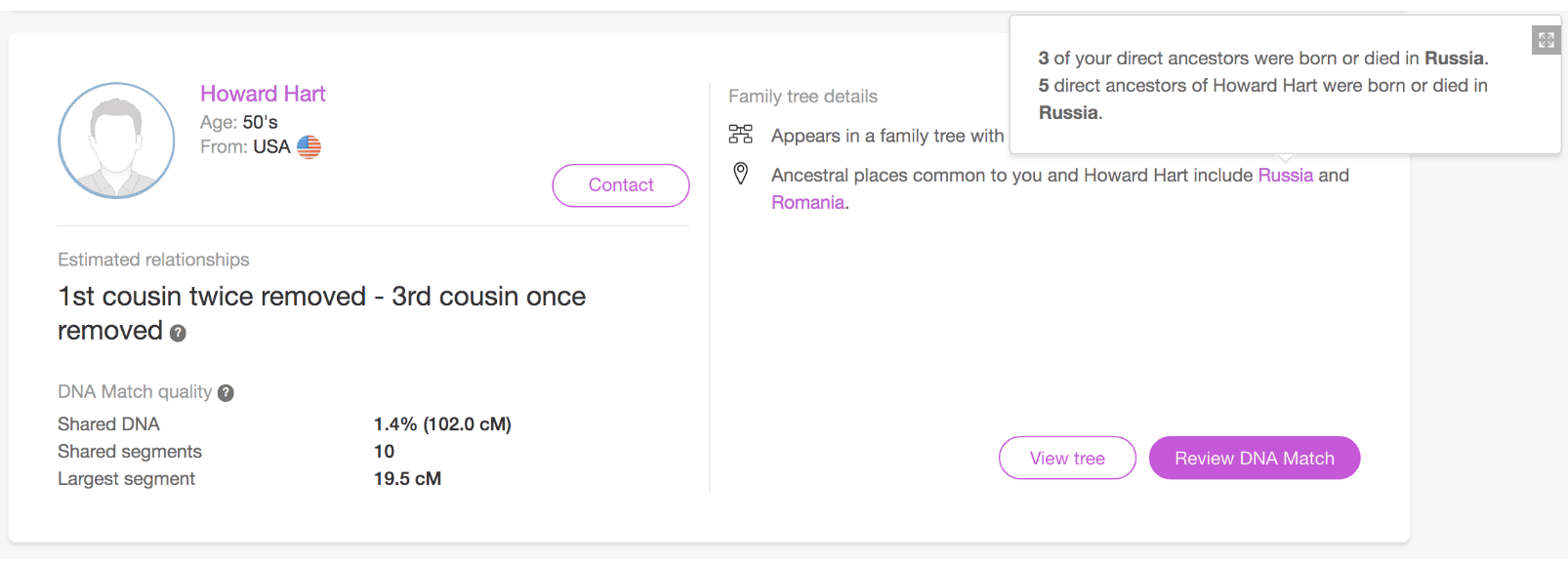
Image from MyHeritage DNA
Click on the Review DNA Match button to see more detailed information about your match. If you and your match have Shared Ancestral Places, this section will show the Ancestral Places you have in common. The map will have pins indicating the cities in which the events took place and below the map, all events in that location from your family tree will be listed side by side with your match’s family tree events. Light gray pins on the map portray events in your family tree, dark gray pins show events in the tree of your DNA Match, and purple pins are used to denote shared places where there are events in both trees that occurred in that specific place.

Image from MyHeritage
Filtering Shared Ancestral Places
Filtering your matches is an indespensible tool, and now at MyHeritage, you can filter your results to show Shared Ancestral Places. Simply use the first entry on the Filter toolbar, which is Tree details, and select “Has shared place.” Isolating the DNA Matches that have Shared Ancestral Places may allow you to figure out how they are related to you.

Image from MyHeritage
This filter can be combined with other multiple filters, to filter matches by additional criteria, and it can also be combined with sorting and search options.
Cost
According to MyHeritage: “Some sections on the Review Match page, such as the new Shared Ancestral Places feature, require a family site subscription to view them in their entirety. Users with a Premium, PremiumPlus, or Complete subscription will have full access to all sections on the Review Match page, while Basic users will have a partial view of some advanced features. Learn more about our subscription plans here.”
Get started with MyHeritage DNA
To take advantage of the Shared Ancestral Places feature, as well as MyHeritage’s robust offering of matches and analysis, pick up a MyHeritage DNA test. They offer one of the most competitive prices on the market, and their powerful matching algorithms can unlock mysteries in your family tree. If you’ve already tested with another testing company, you can also upload your results to MyHeritage! It’s currently a free service, but only for a limited time. So get your results in now to be grandfathered in and receive access to their amazing tools.
Lacey has been working with Genealogy Gems since the company’s inception in 2007. Now, as the full-time manager of Genealogy Gems, she creates the free weekly newsletter, writes blogs, coordinates live events, and collaborates on new product development. No stranger to working with dead people, Lacey holds a degree in Forensic Anthropology, and is passionate about criminal justice and investigative techniques. She is the proud dog mom of Renly the corgi.
Disclosure: This article contains affiliate links and Genealogy Gems will be compensated if you make a purchase after clicking on these links (at no additional cost to you). Thank you for supporting Genealogy Gems!
by Lacey Cooke | Aug 15, 2018 | 01 What's New, DNA, MyHeritage |
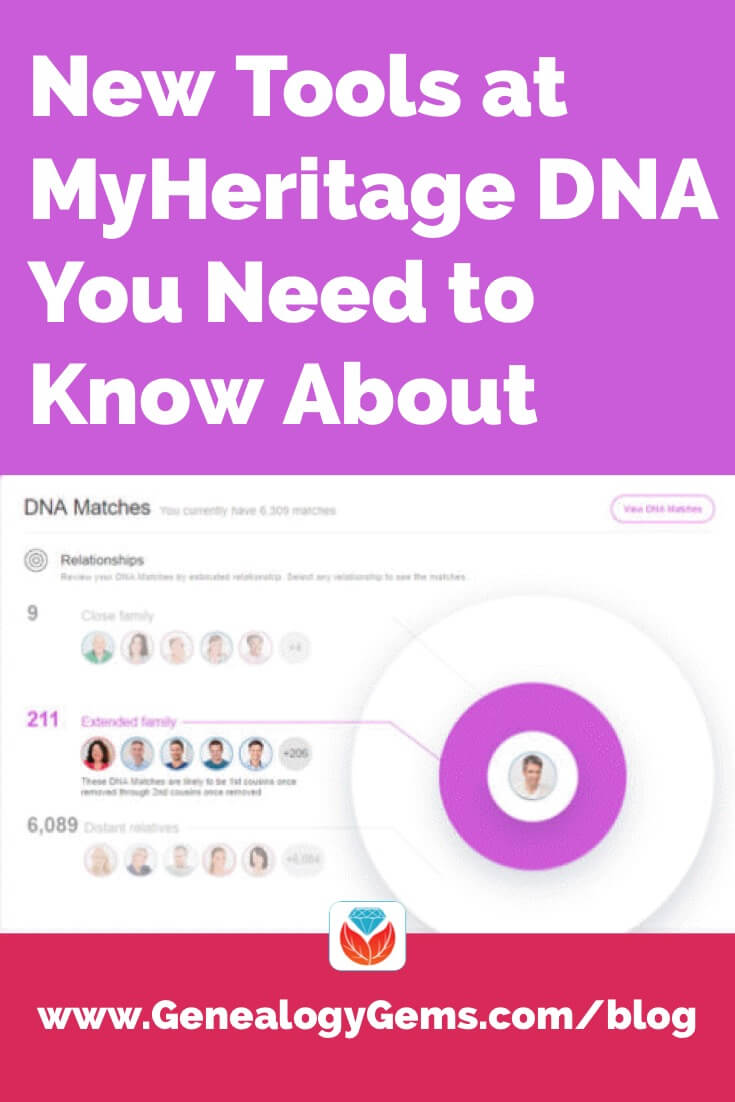 You’ve taken your DNA test for genealogy and anxiously waited for your results. When they arrive, you dive into the ethnicity pie chart. Then matches start rolling in and it can become a little overwhelming to make sense of it all and the benefit it can provide to your genealogy.
You’ve taken your DNA test for genealogy and anxiously waited for your results. When they arrive, you dive into the ethnicity pie chart. Then matches start rolling in and it can become a little overwhelming to make sense of it all and the benefit it can provide to your genealogy.
Thankfully the DNA testing companies are not only focused on advances in testing, but also in creating tools that make it easier for you to interpret and use your results.
MyHeritage DNA continues to release improvements to their DNA product that are meant to both enhance our experience with their website and make it easier to do our genetic genealogy work. You’ll also find an improved presentation of your genetic information that makes it easier to share with your relatives.
The MyHeritage DNA Overview Tab
Just recently MyHeritage DNA announced the addition of new filters for their match page and a bit of a redesign. The small redesign includes moving the ethnicity estimate into a tab right next to the DNA matches tab, as well as adding an Overview tab.
For any relatives who you have convinced to test, but who only show a passing interest in the actual genetic genealogy research, this Overview tab is a great way to show them their results without overwhelming them. There is a simple rundown of the ethnicity results, and then matches are broken up by relationship level and location.
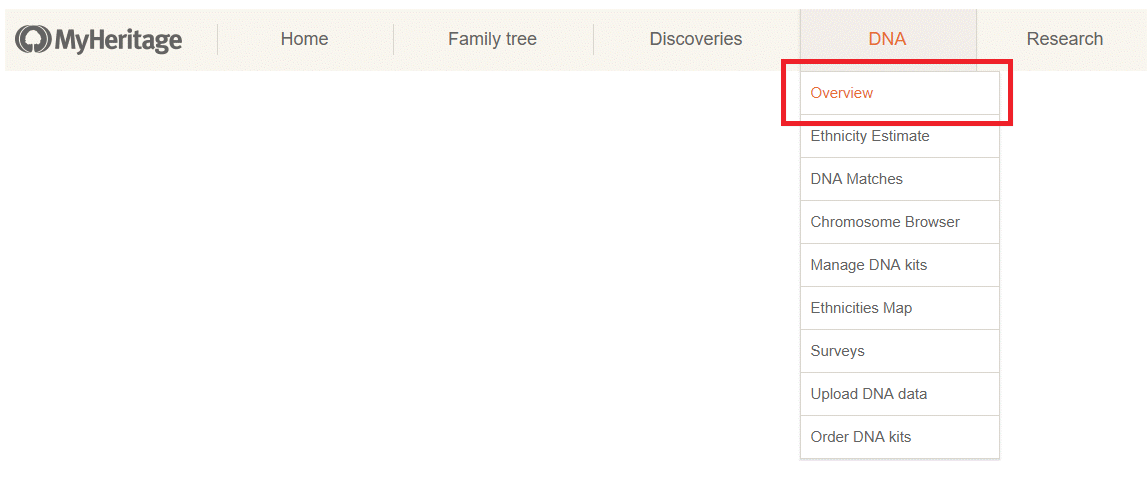
The MyHeritage DNA Location Feature
It is this location feature that will most interest the casual investigator, as well as the serious researcher. This filter lets you see the current location (note: NOT the birth location, though according to the MyHeritage blog post they plan to add birth location in a future update) of your DNA matches. Now, of course, this isn’t an active GPS that is spying on your match, but this tool relies on the location that your match has listed as their location in their MyHeritage account.
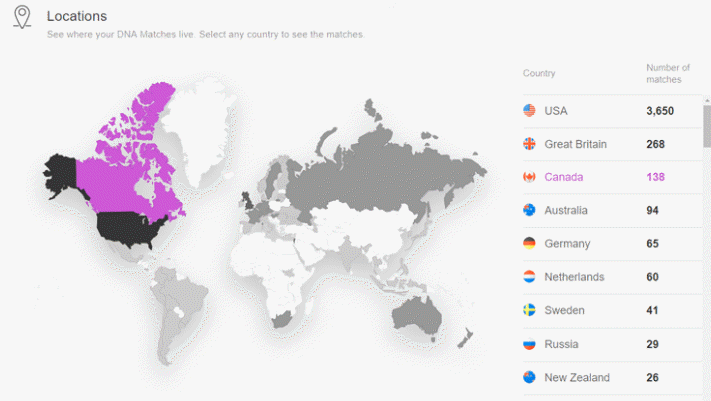
First, it is interesting just to scroll through all of the listed countries and see the variety of locations where your DNA is currently residing. Just think about that for a second: If you are DNA matching with someone in Germany, that means that you are sharing some exact pieces of DNA with someone in Germany and a little bit of you is actually there. This can make for a fascinating exercise when you compare this list of match locations to the locations listed in your ethnicity results. Remember that your ethnicity results can represent your ancestral locations recently, or a very long time ago. So if you see locations on your match list that also appear in your ethnicity results, this might be a good indication that the overlapping location might actually belong in your genealogy. Or the absence of overlap might help you weed out those ethnicities that were thousands of years ago. For example, if you see that your ethnicity results list you as 2% Greek, but you don’t have any DNA matches in Greece, this could mean that your connection to this location is before genealogical time. Of course, it could also mean that the right people from Greece haven’t tested yet, so don’t get too caught up in these deductions.
“If you are DNA matching with someone in Germany,
that means that you are sharing some exact pieces of DNA with someone in Germany
and a little bit of you, is actually there.”
MyHeritage DNA Ethnicities
The last section in the Overview, and the last filter for your match list, shows you how many of your matches are reporting at least 10% of various ethnicities. This might be helpful if you are working your Irish lines, as you can click on Irish, Scottish, and Welsh and see all of your DNA matches who report at least 10% in the Irish, Scottish, and Welsh category.
Combining MyHeritage DNA Filters
Another powerful way to use the filters at MyHeritage is to combine them. On the main match page, you can click on two different filters to further refine your results. So perhaps if you are looking for your Irish ancestor, you might click on the Irish location filter, and then also on the Irish, Scottish, and Welsh ethnicity filter. This will give you all your matches who currently live in Ireland, and who score at least 10% in the Irish, Scottish, and Welsh category.
Of course, the matches that show up after all the filtering aren’t necessarily worth your time or attention. Begin by taking a quick look at how much shared DNA you have. You will want to be sure that you share at least 20 cM before you go spending too much time scouring their pedigree charts for evidence of a shared ancestor.
Likely these filters will continue to improve over time. One thing I would like to see is the ability to use the relationship filter to isolate third cousins, instead of always lumping them with the distant cousins. Most of us don’t have very mysteries in the Extended Family (1st cousins once removed – 2nd cousins once removed) category, so I personally don’t find this filter to be very useful. I would like to see them allow us to filter our best third and fourth cousins out from the rest of our distant matches. Hopefully, MyHeritage can make some refinements in those categories, and thereby make their powerful idea of a two-pronged filter even more effective.
Stay tuned to the Genealogy Gems blog where you will hear updates about MyHeritage DNA (and other DNA testing companies) as they are announced. If you want help in getting more from your DNA test results and using the powerful tools at MyHeritage, my new quick reference guide MyHeritage DNA is available alone or bundled with other DNA resources at the Genealogy Gems store here. Premium eLearning Members can watch the Premium Video Get the Most our of MyHeritage DNA (and download the exclusive handout!) in the Premium Video section here at Genealogy Gems (subscription and sign in required).
What’s your experience using these tools at MyHeritage DNA? Please join the conversation and leave a comment below.
About the Author: Diahan Southard has worked with the Sorenson Molecular Genealogy Foundation, and has been in the genetic genealogy industry since it has been an industry. She holds a degree in Microbiology and her creative side helps her break the science up into delicious bite-sized pieces for you. She’s the author of a full series of DNA guides for genealogists.
Disclosure: This article contains affiliate links and Genealogy Gems will be compensated if you make a purchase after clicking on these links (at no additional cost to you). Thank you for supporting Genealogy Gems!
by Lisa Cooke | Jul 19, 2018 | 01 What's New, DNA |
Here’s exciting genetic genealogy news that you’ll want to know about.
Findmypast and Living DNA have announced a new partnership. The two leading British companies are creating a new DNA experience focused on uncovering British & Irish roots.
This new service will be launched in the Fall of 2018. You can purchase a Living DNA kit right now to get your detailed ethnicity results, interactive map of your heritage throughout history, and family line ancestry (including mother line, and father line for males). As their database grows, your results will automatically be updated to reflect even more accurate results. According to Findmypast, when the Findmypast integration is officially launched later this year, all existing Living DNA test takers will be given the option to opt-in to receive DNA matching at no extra cost. Stay tuned to Genealogy Gems for more official announcements and updates!
From the press release issued by Findmypast:
Thursday July 19th: Leading British and Irish family history website, Findmypast, has today announced a new partnership with the providers of the world’s most advanced DNA test, Living DNA.
Together, the two British companies are creating a new DNA experience that is designed to help customers explore their British and Irish roots. This new experience will combine cutting-edge science with traditional family history research methods, allowing families to discover more about their past and present.
Living DNA’s tests provide a unique breakdown of ethnic identities associated with 21 regions across Britain and Ireland by analyzing unique combinations of linked DNA. This proprietary method delivers a level of detail that is currently unmatched by any other test available on the market.
By combining technology from the leading British DNA company with deep expertise and Findmypast’s vast collection of more 9 billion historical records and newspaper articles, family historian’s will be able to make new discoveries about their British & Irish genetic history.
New, co-branded kits will be launched when the integrated Findmypast and Living DNA service is introduced later in the year.
“Our partnership with Findmypast continues Living DNA’s mission to make DNA testing simple. We are passionate at not only providing cutting edge ways of looking at your DNA but to do so with strict privacy measures by never selling your data. This partnership allows the most precise DNA test on the market to work together with Findmypast’s family history records in a way not done before” says Living DNA Co-Founder, David Nicholson.
Tamsin Todd, CEO of Findmypast, said: “As the world leader for British and Irish records, we work hard every day to help our customers feel the thrill of making discoveries about their families. I’m delighted that we are partnering with a British company, Living DNA, who are pioneers in DNA technology, and look forward to combining our expertise in DNA technology and historical records to help people around the world connect with their British and Irish roots.”
Disclosure: This article contains affiliate links and Genealogy Gems will be compensated if you make a purchase after clicking on these links (at no additional cost to you). Thank you for supporting Genealogy Gems!
by Lisa Cooke | May 9, 2018 | 01 What's New, Genealogy Gems Podcast
The Genealogy Gems Podcast
Episode #217
with Lisa Louise Cooke
In this special episode, host and producer Lisa Louise Cooke takes a look at the Golden State killer, one of the most notorious crime sprees in recent memory. She’ll talk about the role that DNA testing played in an ultimate arrest, and the impact that these events are having on genealogists and the use of DNA in genealogy.
The Golden State Killer
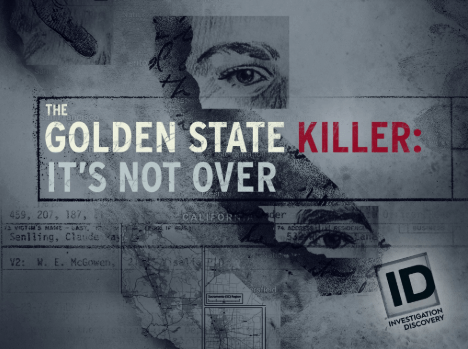
“Golden State Killer: It’s Not Over” docuseries. (As an Amazon Associate, Genealogy Gems earns from qualifying purchases)
“The Golden State Killer,” 48 Hours episode on CBSNews.com (44-minute episode)
Between 1974 and 1986, activities attributed to the Golden State Killer include at least 12 murders, more than 50 rapes, and over 100 burglaries in California from 1974 through 1986.
The criminal’s methods led some investigators to believe that these differently-labeled criminals were very likely one in the same.
In 2001, DNA definitively linked several rapes in Contra Costa County believed to have been part of the East Area Rapist series, a series of murders in Southern California.
In 2011, DNA evidence proved that the Domingo?Sanchez murders were committed by the same man, known as the Golden State Killer.
BONUS CONTENT for Genealogy Gems App Users

If you’re listening through the Genealogy Gems app, don’t forget to check out your bonus content for this episode! The Genealogy Gems app is FREE in Google Play and is only $2.99 for Windows, iPhone and iPad users

MyHeritage.com is the place to make connections with relatives overseas, particularly with those who may still live in your ancestral homeland. Click here to see what MyHeritage can do for you: it’s free to get started.
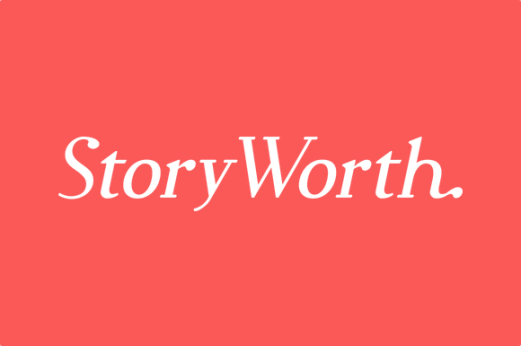
StoryWorth makes it easy and fun for Mom to share stories with loved ones every week. At the end of the year, she’ll get them all bound in a beautiful hardcover book. Strengthen your bond as you get to know her in a whole new way! Go to http://www.storyworth.com/lisa for $20 off when you subscribe. Give a gift for Mother’s Day that is actually a gift for you, too!
Help solve DNA mysteries with these resources:
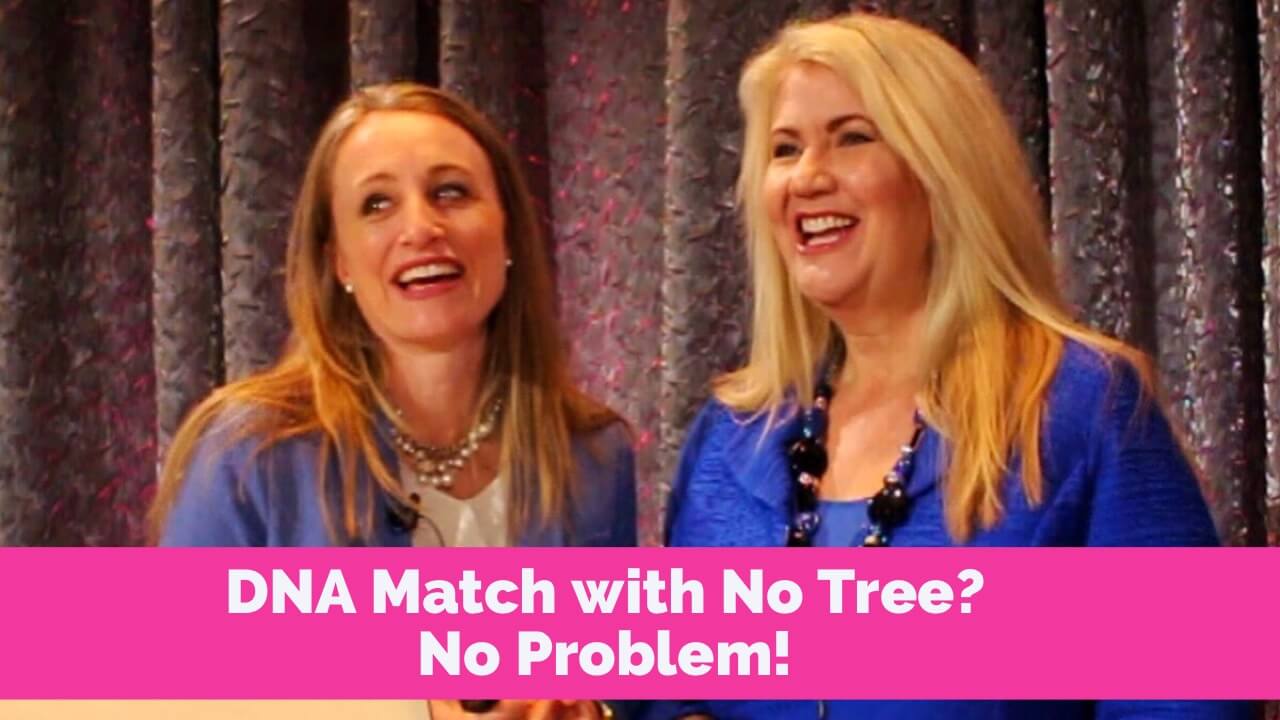
Caution: In this episode, Lisa shares her personal opinions on the use of technology for crime fighting and the implications for DNA testing for genealogy. She encourages everyone to do their own homework and make informed decisions in line with their own values, opinions, and objectives.
Reality check: “The only way to ensure privacy is to never put anything of any kind online. Just like the only way to ensure you will never be in a car accident is to never, under any circumstances, get in a car.”
Read more about DNA testing company partnerships:
“Another personal genetics company is sharing client data,” Wired.com article by Katie M. Palmer, published 21 July 2015, on Ancestry.com’s partnership with Google-owned Calico biotech firm
“23andMe teams with Big Pharma to find treatments hidden in our DNA,” Wired.com article by Davey Alba, published 12 January 2015, on 23andMe’s partnership with Pfizer
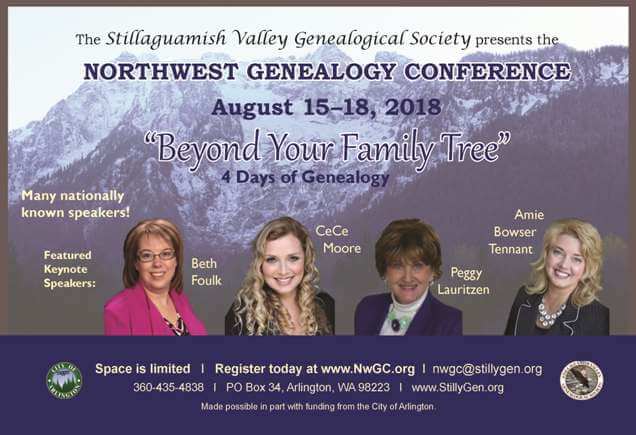
Several ways we already use DNA matches:
- Genealogists use to build family trees
- Adoptees use to identify birth parents (or other biological relatives)
- Orphans trying to find long lost siblings and relatives
- Anyone looking for estranged family members
- Researchers identifying unidentified human remains, including POW/MIAs

Lisa Louise Cooke uses and recommends RootsMagic family history software. From within RootsMagic, you can search historical records on FamilySearch.org, Findmypast.com and MyHeritage.com.
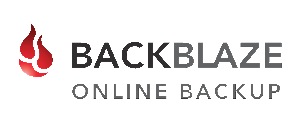
Keep your family history research, photos, tree software files, videos and all other computer files safely backed up with Backblaze, the official cloud-based computer backup system for Lisa Louise Cooke’s Genealogy Gems. Learn more at https://www.backblaze.com/Lisa.
More information on DNA testing
How to download, transfer and upload your DNA with various testing companies by Diahan Southard
“How DIY genetic testing kits can be used against you,” News.com.au article by Gavin Fernando, published 3 May, 2018.

“When you test, you are also making a decision on behalf of your parents, siblings, children, grandchildren, and future descendants. Regardless of good intentions or stated ethics codes in the genealogy community, it isn’t possible to write and get the express permission of everyone who could be affected by you having your DNA tested.” ?Lisa Louise Cooke
Genealogy Gems can help you whether you test or not!
Keep listening to the Genealogy Gems Podcast for genealogy news, tips, inspiration and strategies (DNA is one of many tools talked about!)
Read free online articles at GenealogyGems.com. Click here to read dozens of articles on DNA.
Click here to view our complete line of DNA quick reference guides
Become a Genealogy Gems Premium eLearning Member, to get access to all the Premium video classes and the entire Premium Podcast: new monthly episodes plus the full archive of more than 150 previous ones.

PRODUCTION CREDITS
Lisa Louise Cooke, Host and Producer
Sunny Morton, Editor
Diahan Southard, DNA Content Contributor
Hannah Fullerton, Audio Editor
Lacey Cooke, Service Manager
Disclosure: This document contains affiliate links and Genealogy Gems will be compensated if you make a purchase after clicking on these links (at no additional cost to you). Thank you for supporting this free podcast and blog!
Check out this new episode!

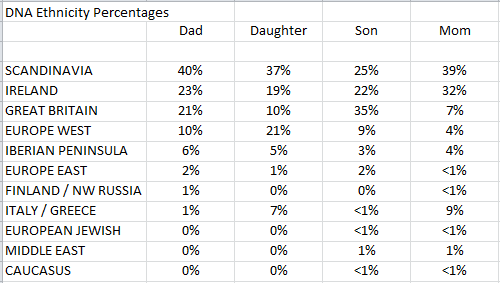



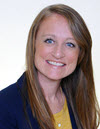

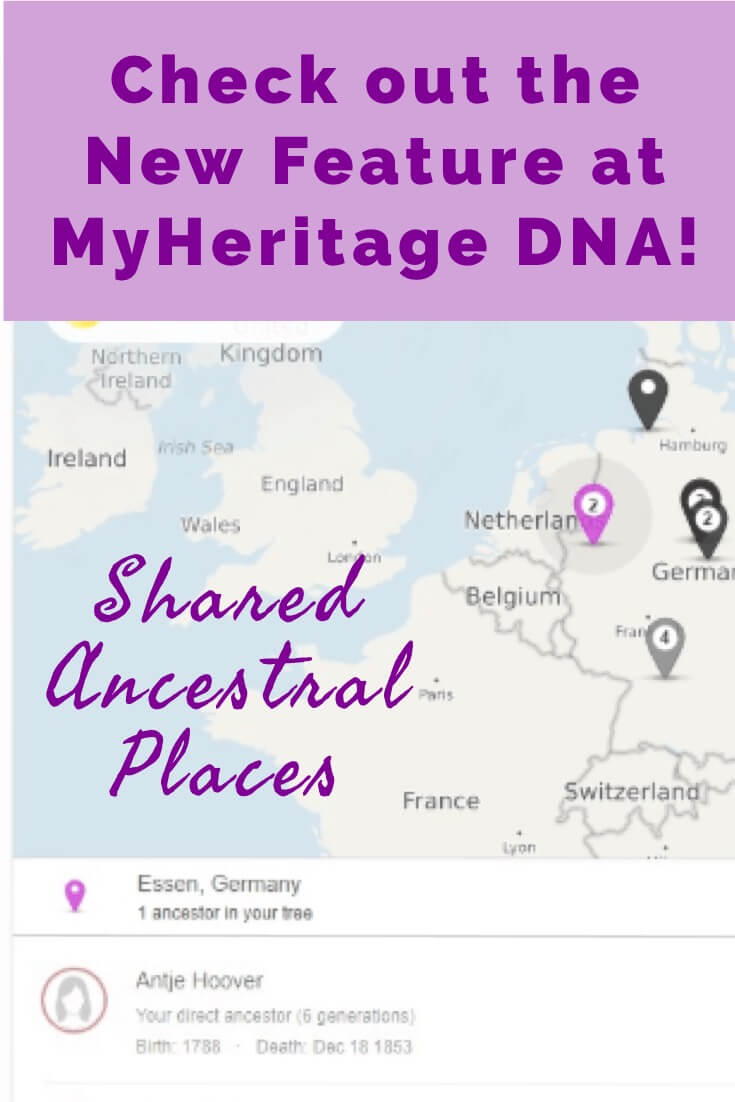



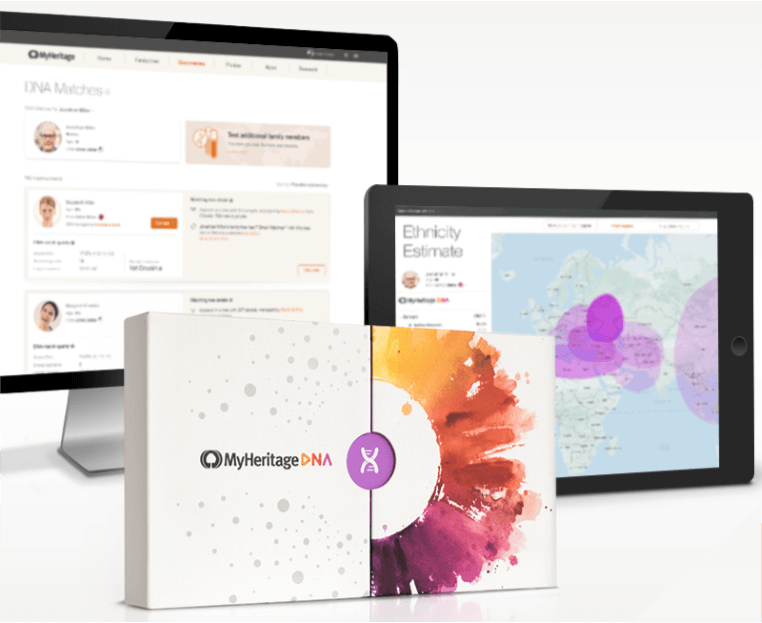
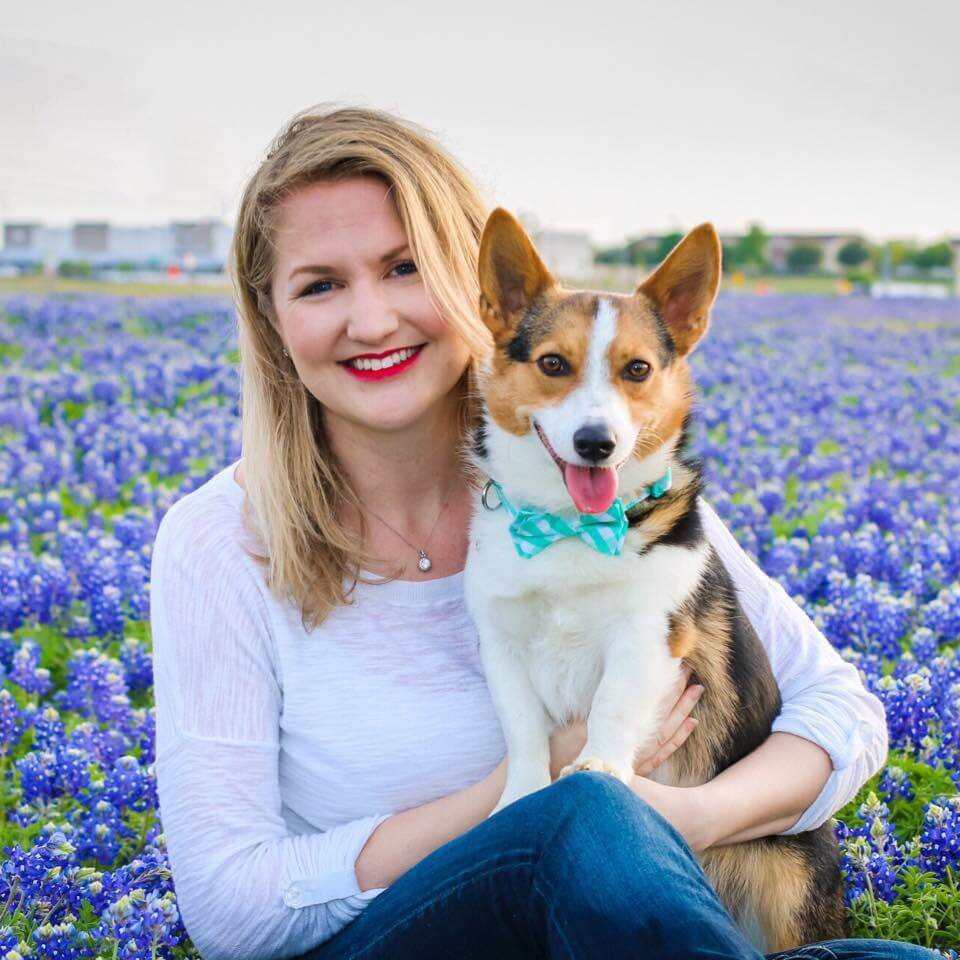
 You’ve taken your DNA test for genealogy and anxiously waited for your results. When they arrive, you dive into the ethnicity pie chart. Then matches start rolling in and it can become a little overwhelming to make sense of it all and the benefit it can provide to your genealogy.
You’ve taken your DNA test for genealogy and anxiously waited for your results. When they arrive, you dive into the ethnicity pie chart. Then matches start rolling in and it can become a little overwhelming to make sense of it all and the benefit it can provide to your genealogy.

